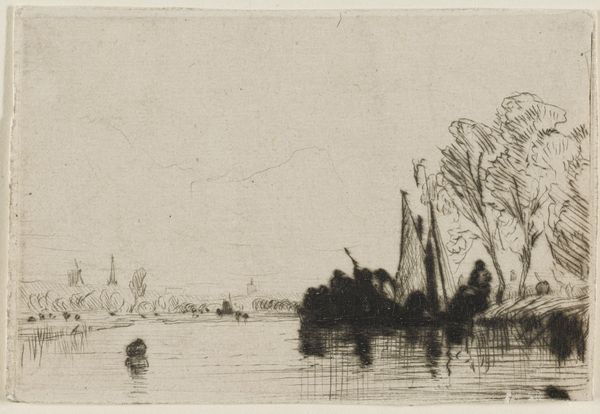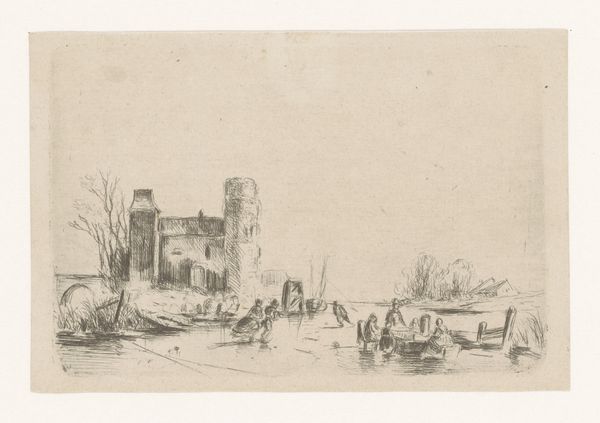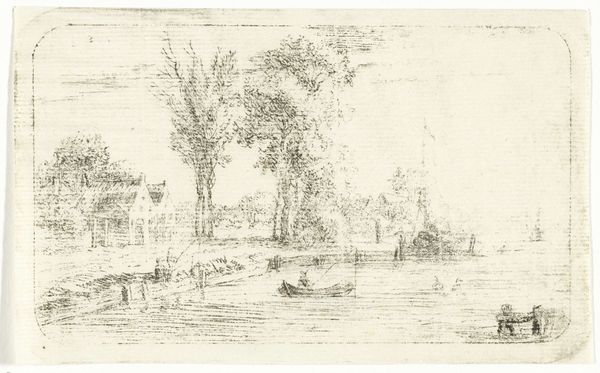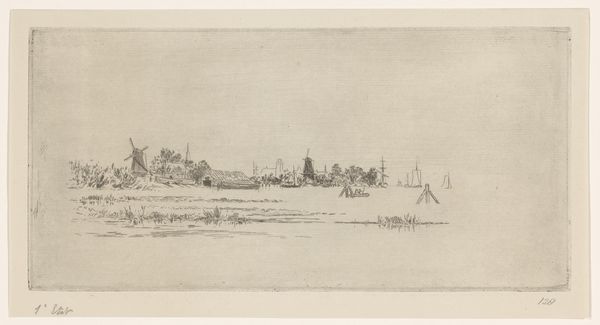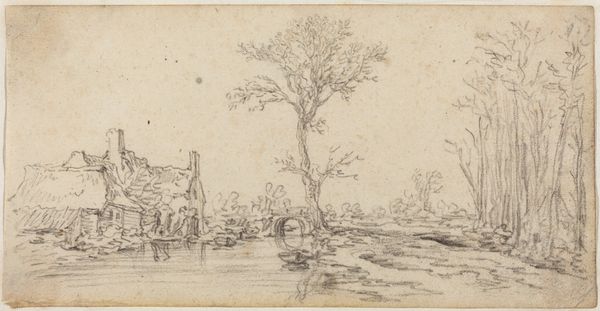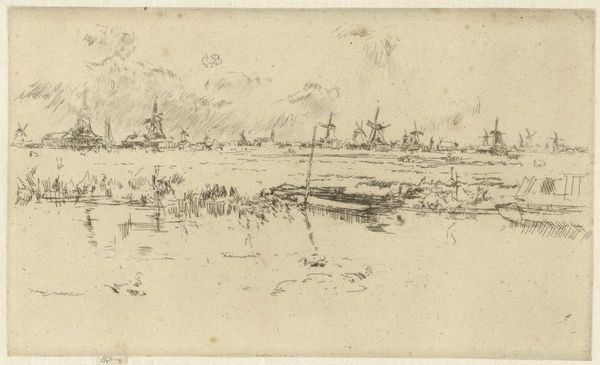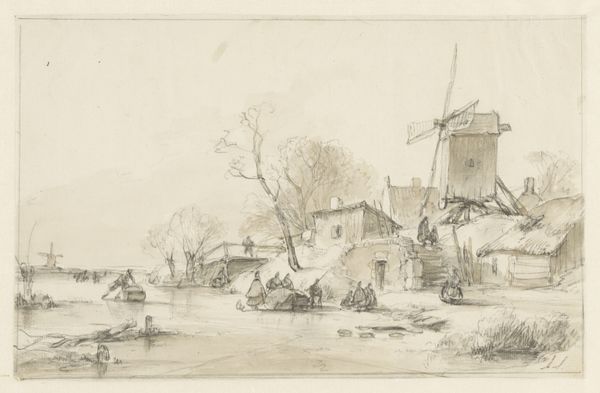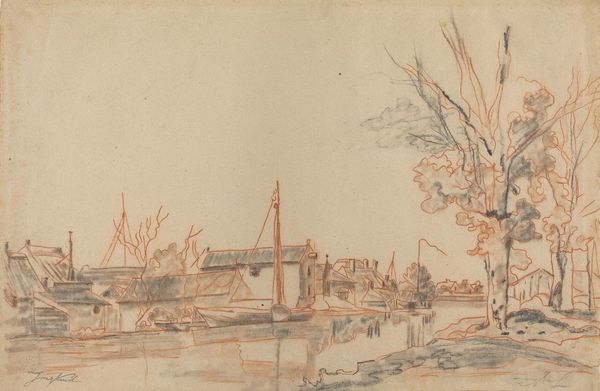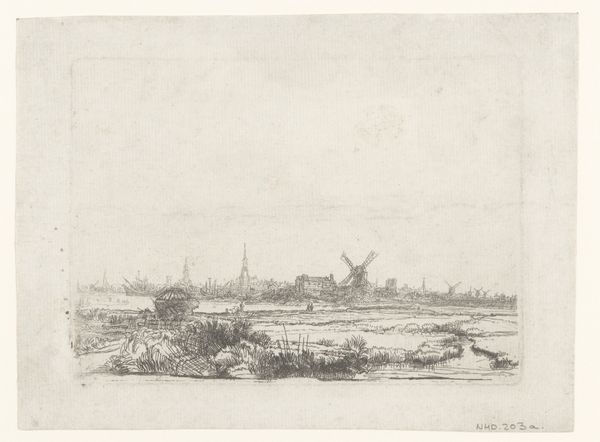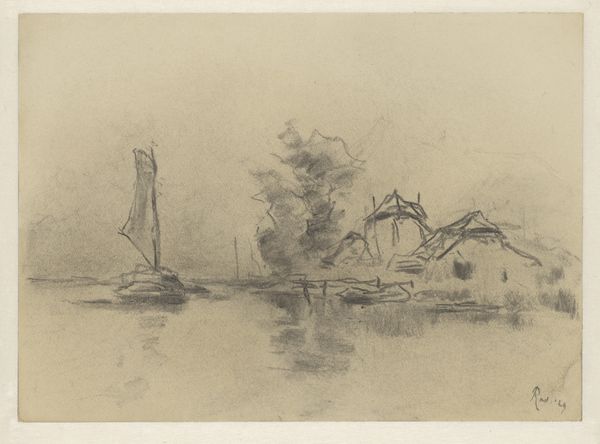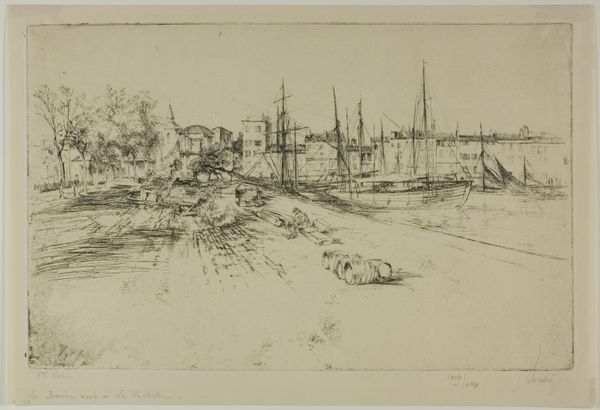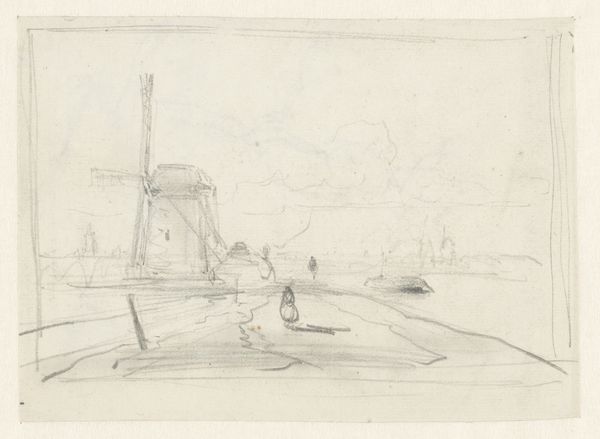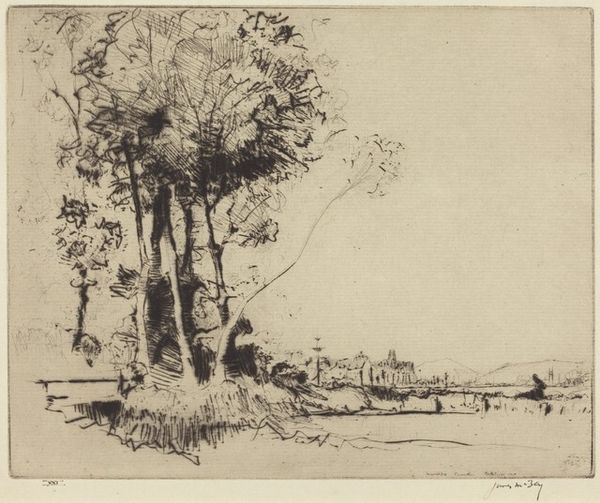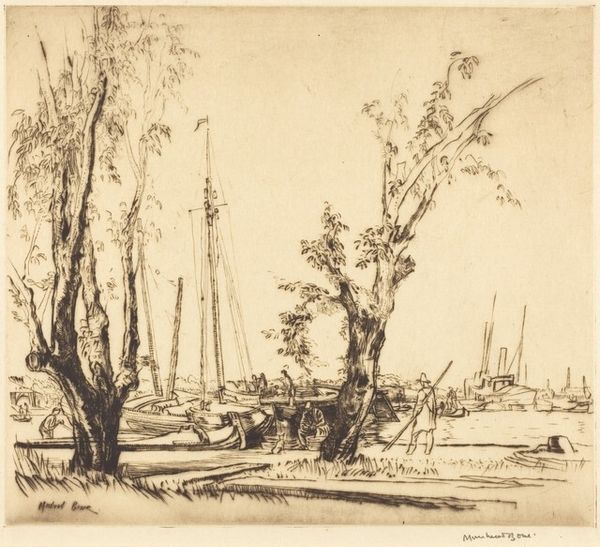
drawing, ink, pen
#
drawing
#
dutch-golden-age
#
landscape
#
etching
#
ink
#
pen
Dimensions: 7 1/8 × 12 in. (18.1 × 30.48 cm)
Copyright: Public Domain
Curator: This delicate landscape is titled "Het Molentje," or "The Little Mill," and it comes to us from an anonymous Dutch artist, dating somewhere between 1670 and 1800. It resides here with us at the Minneapolis Institute of Art. Editor: It’s incredibly sparse, almost ethereal. Just lines of ink defining a scene. You can almost feel the cool dampness in the air and imagine the scratch of the pen across the paper, trying to capture it. Curator: Absolutely, and the artist really wrings the most out of those simple materials. Ink and pen, that’s all, to create a world. You know, windmills were vital machines for the Dutch economy; they drained the land, they ground the grain... Editor: And so much back-breaking labor! People forget that these idyllic scenes, while lovely, were also sites of immense toil. Look at how the mill dominates the village – it’s a statement about power, isn't it? Both the literal power generated by the wind and the economic power it represents. I bet the artist knew exactly the cost of flour or drainage projects in this location. Curator: I hadn’t considered that, but it certainly colors my perspective. It’s less an idealized pastoral view and more a study of infrastructure… which actually appeals to me more. There is an echo, however, of the broader cultural and economic importance of windmills that does imbue the scene with significance beyond just the depicted location. What do you think about the almost vacant space at the center and top of the composition? Editor: I see it as a wonderful opening into something expansive, hinting at potential that lies ahead; It is almost unfinished in how it seems to float into emptiness, like an unwritten tale of what that region can someday accomplish. Curator: Interesting point of view; for me, the overall quietude in "The Little Mill" reminds us to not only consider materials but appreciate the simple moments of observing. It offers the viewer a serene escape while offering glimpses of deeper meanings that emerge only after a thoughtful meditation on labor or cultural perspective. Editor: Indeed! A wonderful drawing. I can only hope we've enriched everyone's appreciation for its artistry!
Comments
minneapolisinstituteofart about 2 years ago
⋮
Martin Royalton Kisch identified this drawing, long attributed to Antonie van Borssom, as a copy of one by Aert de Gelder in the British Museum (1860,0616.129). De Gelder, Rembrandt’s final student and long-lived acolyte carried his master’s style forward into the 18th century. Royalton Kish dates the original drawing as 1670-1700. It is difficult to date the drawing offered here. Close copies have been made of Rembrandt and Rembrandt-school drawings ever since the 17th century, but the present one is on hand-made laid paper consistent with 17th and 18th century usage.
Join the conversation
Join millions of artists and users on Artera today and experience the ultimate creative platform.
